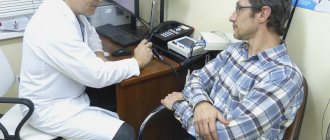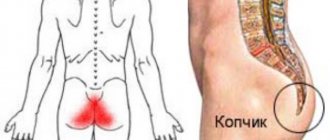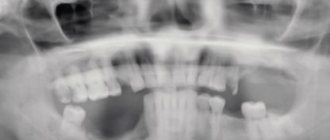What is edema?
Edema is the accumulation of fluid in tissues.
Many believe that the main mechanism for the occurrence of edema is the “accumulation of salts” in tissues that attract water. However, in reality, the formation of edema in detail looks somewhat more complicated. Edema can occur due to the following disorders:
- disturbances in the permeability of cell membranes. In this case, the cells seem to begin to “release” more fluid outward than normal.
- protein metabolism disorders. Not only salts, but also protein molecules have the ability to attract water. That is why a violation of their metabolism (for example, with an unbalanced diet) can lead to edema.
- pressure gradient changes. The hydrostatic processes occurring in the body are quite complex. Therefore, the fact that our ankles are swollen may mean that the correct difference in fluid pressure in the vessels and in the surrounding tissues has been disrupted.
- blockage of small vessels, most often capillaries. This leads to the fact that the normal circulation of blood or lymph is disrupted, and we complain of swelling of the ankles.
All these mechanisms can be triggered in various diseases and conditions. Below we list the main ones.
“Female” causes of leg swelling
In women, swelling of the legs can be caused by special reasons:
- premenstrual syndrome. Before menstruation, the hormonal balance is disrupted - the relative content of estrogens increases, and estrogens retain fluid in the body;
- pregnancy. During pregnancy, a woman's body produces a large amount of progesterone, which reduces vascular tone. This contributes to stagnation of blood in the legs. The growing fetus can compress large vessels, which also causes edema - this reason becomes significant in the later stages. Swelling can also be a manifestation of gestosis (late toxicosis of pregnancy).
Why does one leg swell?
You can often hear the complaint that only one leg is swollen at the ankle. There may be several reasons for this.
Injury . Sometimes a person can get injured in the ankle joint and not even pay attention to it (what we commonly call “twisted his ankle”). And only when the ankle in the area of the injured one begins to swell, do we remember that there really was an injury.
Joint damage, including arthrosis. If you have a serious ankle condition, such as osteoarthritis, circulation may be impaired, leading to swelling of the foot and ankle.
Insect bite or allergic reaction. Swelling of one ankle, especially in the warm season, can often be associated with an allergic reaction.
Infection . If you injure your leg and do not treat the wound, it may become infected and subsequently develop unilateral edema.
Thrombosis. This is a very dangerous condition, and if you notice any signs of it, we recommend that you consult a doctor immediately. Unilateral swelling may indicate blockage of the vessel by a thrombus. Self-treatment in this case is impossible; only specialists can cope with this condition. Also, with thrombosis, redness may be observed on the skin, which spreads along the course of the vessel.
Varicose veins In addition to the listed conditions, complaints about swelling of the right or left leg at the ankle may be associated with the development of varicose veins. Swelling is one of the first signs of this disease. In the early stages, this is not constant swelling that goes away after a night's sleep, rest or some exercise. At a later stage, they begin to spread from the ankle higher and become permanent.
Lymphedema. Another dangerous disease for the body, in which only one ankle may swell, is lymphedema, a violation of the outflow of lymph. When the disease first begins, lymphedema is mild. As lymphedema progresses, the swelling becomes firm and you can no longer apply pressure to the area of swelling with your finger. If you notice that the nature of the swelling is changing, be sure to consult a doctor - lymphatic swelling can only be removed with the participation of a specialist and with constant treatment.
Why is arthritis of the ankle and foot dangerous?
The disease is dangerous because it often goes unnoticed and leads to a complete loss of joint function, that is, the person becomes disabled. Acute purulent complications of ankle arthritis are also dangerous.
Arthritis of the foot and ankle begins gradually, unnoticeably
Stages
There are several stages of disease development. The inflammatory process develops gradually, turning into a degenerative-dystrophic one:
- Early – inflammation
. The synovial membrane swells, and inflammatory exudate appears in the joint cavity. Pain is moderate, swelling and redness are absent or only slightly expressed. - Explicit – inflammatory-proliferative process
. The synovial membrane increases in volume, erosions appear on the cartilage, and soft granulations of connective tissue grow in the articular cavity (the process of proliferation - growth). The inflammatory process intensifies. Externally, this is manifested by increased swelling, redness and pain. - Progressive - mild ankylosis
. The cartilage is destroyed, soft granulations turn into dense connective tissue that grows in the joint cavity. Bone growths appear. The joint gradually loses its mobility. Pain, swelling and redness continue to bother you constantly or during exacerbations. - Advanced - complete immobility (bone ankylosis).
There is no cartilage tissue, bone growths connect the articular surfaces of the ankle, which eliminates movement in the ankle and foot (ankylosis of the ankle). The pain is constant, arthritis of the foot develops with limitation of its function.
Possible complications
If ankle arthritis is left untreated or treated independently with home remedies, the following complications may develop:
- purulent processes - abscesses, phlegmon, sepsis;
- subluxations and dislocations of the ankle;
- development of foot arthritis;
- immobility of the ankle and inability to move without assistive devices.
What does bilateral edema indicate?
Bilateral edema can indicate both serious disruptions in the functioning of a number of organs and systems, and improper distribution of load during the day. Let's consider the second option first.
Incorrect distribution of the load is a long stay in one position, for example, static work on the legs throughout the day. But it can also be too much physical activity that is unusual for you, sitting still for a long time (for example, after an air flight) and even uncomfortable shoes. All these reasons can lead to the formation of edema in both legs. As a rule, this swelling goes away after some time.
But there are edema caused by disruption of various organs, in particular the heart and kidneys. Cardiac edema occurs due to the fact that the heart cannot cope with pumping blood, and its stagnation occurs. These swellings are soft to the touch, the skin in the area of the swelling is pale, may acquire a bluish tint, and is cool. If you press on the swollen area, a dent remains in the area of pressure. Cardiac edema is not constant; during night sleep it decreases or subsides. Swelling of both ankles can be associated with impaired kidney function, but more often renal edema appears on the face. But if, simultaneously with swelling, you notice problems with urination, then contact a nephrologist. It is possible that you are dealing with a malfunction of the excretory system.
It is important to pay attention to one more significant point. Swelling of the ankles in men is most often associated with increased stress on the legs. Swelling of the ankles in women can be caused by hormonal changes, for example, during pregnancy or before the onset of menstruation. Also, a similar reaction can be caused by taking hormonal drugs.
General information about the disease
Arthritis of the ankle joint is an inflammatory process that has different origins, symptoms and course. The disease can be independent (primary) or develop against the background of some existing process (secondary). Arthritis is divided into acute and chronic. ICD-10 code M00 – M99.
The ankle joint is a movable joint formed by three bone structures: the heads of the tibia and fibula of the leg and the talus of the foot. To the right and left of the talus are bony elevations - the ankles. The peculiarity of the joint is its resistance to external influences, in this it is much superior to the knee joint. It has a good blood supply and innervation and is protected by ligaments that firmly hold it in the desired position.
Arthritis of the ankle develops at any age. In children it is predominantly juvenile idiopathic arthritis (JIA), in women it is rheumatoid lesions, in men it is reactive arthritis.
What to do if your ankles are swollen?
Of course, if you notice that your legs are regularly swelling, you should consult a doctor.
Swelling in your feet and ankles may indicate overuse of your legs during the day, or it may be a sign of a serious medical condition such as varicose veins or lymphedema. What is the true cause of edema can only be determined by a specialist. And by following all his recommendations, you will be able to maintain the beauty and health of your feet for as long as possible.
And some traditional medicine recipes can help quickly relieve an unpleasant condition:
- take a contrast shower or bath. Sometimes such activation of blood circulation is enough to relieve swelling, especially if it is caused by tired legs.
- A compress with blue clay helps improve the condition of your feet. Dilute blue clay (it is sold at the pharmacy) with water to the consistency of sour cream and apply to the area of swelling. Let dry and leave for about an hour. You can wrap your leg in film so that the clay does not crumble when it dries.
- baths with sea salt, mint, birch and juniper leaves relieve tired legs and help reduce swelling.
If swelling is constantly observed, introduce into your diet foods that have a diuretic effect: watermelon, cucumbers, parsley, it is also recommended to drink pumpkin juice.
What to do if the disease worsens
Arthritis of the foot and ankle occurs with painful relapses. In some clinical forms of the disease, exacerbations can be very painful. How to help yourself, reduce pain before the doctor arrives? This can be done like this:
- calm down by taking valerian or motherwort;
- take a tablet of any pain reliever - Analgin, Diclofenac, Ibuprofen, Nise, Paracetamol, etc.; the analgesic effect occurs very quickly after using a rectal suppository with Diclofenac;
- apply pain-relieving ointment (gel, cream), for example, Fastum-gel, to the ankle and foot area;
- call a doctor at home;
- lie on your back on a flat surface and elevate your sore leg, placing a pillow under your shin and heel;
- calmly wait for the doctor to arrive.
Frequently asked questions about the disease
I dance professionally, but recently my ankle joint has started to hurt on one side. Which doctor should I see?
You can start with a traumatologist. If necessary, he will refer you to another specialist.
Do you join the army if you have ankle arthritis?
If there is persistent impairment of articular function, do not take it.
Patients are often interested in how to treat arthritis of the joints of the foot and ankle. This is the wrong approach. You need to look not for a cure for this disease, but for a clinic that will help you cope with it. The Moscow Paramita clinic has everything necessary to help any patient with ankle arthritis. Contact us, you won’t regret it!
Literature:
- Grazhdanov K.A., Barabash A.P., Barabash Yu.A., Kauts O.A., Zuev P.P. Technology of treatment of purulent arthritis of the ankle joint // Modern problems of science and education. – 2021. – No. 3.
- Martinovich AB, Infected injuries and post-traumatic deformities of the ankle joint. // Diss. Candidate of Medical Sciences Minsk 1990. - P. 128.
- Perez Busquier M., Calero E., Rodriguez M. et al. Comparison of aceclofenac with piroxicam in the treatment of osteoarthritis. Clin Rheumatol 1997;16(2):154–9.
- Kornasoff D., Frerick H., Bowdler J. et al. Aceclofenac is a well-tolerated alternative to naproxen in the treatment of osteoarthritis. Clin Rheumatol 1997;16(1):32–8.
Themes
Arthritis, Joints, Pain, Treatment without surgery Date of publication: 12/14/2020 Date of update: 04/03/2021
Reader rating
Rating: 4.71 / 5 (7)
Edema usually affects women and rarely occurs in men. Why is this happening?
Indeed, there are several factors that explain why women are more likely to have swollen lower legs. The first is incorrectly selected shoes. Women more often make “sacrifices for the sake of beauty”, wearing uncomfortable but fashionable shoes, or too high heels. All this disrupts the venous outflow, which ultimately leads to edema. The second important factor is regular hormonal fluctuations: many women note that swelling is associated with the phase of the cycle. And of course, edema is accompanied by pregnancy: at this time, blood circulation becomes difficult, hormonal levels change, and often expectant mothers allow themselves to deviate from proper nutrition.
Content:
- Danger of leg swelling
- Factors leading to leg swelling
- Causes and treatment of leg swelling
Danger of leg swelling
This pathological condition is one of the symptoms of a large number of diseases. First of all, such symptoms are accompanied by diseases of the veins of the lower extremities, which lead to the development of chronic venous insufficiency. Chronic right ventricular heart failure also leads to peripheral edema. Nephrotic and nephritic syndromes due to kidney disease, hypothyroidism, lymphostasis due to congenital or acquired pathology of the lymphatic vessels and many other conditions can lead to increased swelling.
Factors leading to the development of edema include:
- a decrease in the oncotic pressure of the blood plasma or an increase in the oncotic pressure of the intercellular fluid, as a result of which the fluid passes from the vessels into the intercellular fluid along the oncotic pressure gradient
- increase in hydrostatic pressure in blood vessels
- pathological increased permeability of the microvasculature
- violation of the outflow of lymphatic fluid
- low mechanical pressure of adjacent soft tissues.
Causes and treatment of leg swelling
Edema of the extremities in chronic venous insufficiency develops due to impaired permeability of the vascular wall. In the initial stages, swelling of the legs and feet appears sporadically, usually in the evening, and completely disappears after rest. If it is impossible to compensate for the excess amount of fluid with the help of increased lymphatic drainage, edema increases. As a result, the elasticity of the skin decreases and permanent indurative swelling appears. There are also complaints of pain, numbness, discoloration of the skin, increased fatigue, dryness and increased pigmentation of the skin, and muscle spasms. Diagnosis of pathology of the veins of the lower extremities is possible through functional tests, instrumental examination - Doppler ultrasound or duplex angioscanning. A phlebologist diagnoses and treats vein diseases.
In chronic heart failure, as a result of a decrease in the contractility of the heart, hydrostatic pressure in the vessels increases and fluid penetrates into the intercellular space. In the initial stage, pastiness appears, and then actually symmetrical swelling of the lower extremities. They are dense, cold to the touch, worsen in the evening, but as the disease progresses they become permanent and generalized. For diagnosis, it is important to identify a history of a disease that could cause the development of heart failure, and identify other complaints (shortness of breath during exercise or night attacks, pain in the right hypochondrium, heaviness in the abdomen). An ultrasound examination of the heart will be decisive in making the correct diagnosis. To exclude concomitant pathology of the vessels of the lower extremities, Doppler ultrasound is performed. If you suspect CHF, you should consult a cardiologist.
Nephrotic edema occurs as a result of pathology of the glomerular apparatus of the kidneys, as a result of which a large amount of protein is lost in the urine and the oncotic pressure of the blood plasma decreases. This condition can be caused by various kidney diseases - glomerulonephritis, pyelonephritis, hypertension, diabetes mellitus, systemic vasculitis and many others. Such swelling usually spreads from top to bottom, it is warm and soft to the touch, and moves during palpation. Additionally, symptoms such as pain in the lumbar region, decreased urination, change in urine color, as well as various neurological disorders - headaches, increased fatigue, and sleep disturbances - may be observed. Diagnostics includes a urine test, determining the amount of daily protein excretion, a general blood test and biochemical study (increased lipids and decreased albumin in the blood, possibly increased creatinine as a marker of renal failure), ultrasound of the kidneys, Dopplerography of the renal vessels, contrast urography and other diagnostic methods renal pathology. The diagnosis and treatment of renal pathology is carried out by both a general practitioner and a nephrologist.
Hypothyroidism is an endocrine disease that is characterized by a decrease in the production of thyroid hormones by the thyroid gland and is manifested by the appearance of characteristic edema - myxedema (mucoedema). The outflow of lymph and blood decreases, vascular permeability increases, the composition of the intercellular fluid changes with the accumulation of hydrophilic substances. Myxedema differs in that due to the pronounced density, no trace remains when pressed. Most often it is localized in the face and lower extremities. Additionally, symptoms such as drowsiness, decreased blood pressure and decreased heart rate, hair loss, yellowish skin tint, and others are noted. Diagnosis consists of conducting a hormonal study with determination of TSH and thyroid hormones, performing an ultrasound of the thyroid gland and examining the pituitary gland if necessary. This pathology is treated by an endocrinologist.
Treatment
Since the disease is caused by many factors, treatment of leg lymphostasis represents a whole range of measures. A conservative approach, including massage, a special diet, and the use of certain medications, is implemented only in the first stage of the disease. At the same time, doctors give many additional recommendations:
- avoid heat exposure. That is, you need to exclude baths, saunas, solariums, etc.;
- wear soft, non-compressive shoes without heels;
- avoid long static loads. It is not allowed to sit or stand for a long time; it is necessary to move moderately;
- eliminate unnecessary physical activity, especially excessive;
- wear only soft and loose clothing;
- make sure that the skin of your feet is always moisturized and does not rub against clothes and other things, etc.
It is important to fully comply with the list of restrictions that the doctor will indicate - with such an illness, even a minimal wound or unwanted ulcer can greatly complicate the matter.
But treatment of lymphostasis of the lower extremities is not limited to only the listed recommendations. Common methods to combat this problem include the following:
- kinesiotherapy, compression treatment. In the first case, it means performing lymphatic drainage massage, as well as performing physical therapy exercises. In the second case, we are talking about wearing special underwear, as well as bandaging, which, using pressure, changes the redistribution of lymph;
- drug therapy. It is difficult to list specific drugs here, because depending on the situation, drugs from more than ten categories are used. These include diuretics, phlebotropic agents, and much more - everything is prescribed individually;
- physiotherapeutic methods. Magnetic therapy, laser therapy, ultraviolet irradiation and much more help alleviate the patient’s condition;
- surgical intervention. It is indicated in critical cases when other methods cannot cope with the problem.
The sooner treatment is started, the higher the chance that leg lymphostasis will be neutralized and the patient will continue to live a full life. The further the disease develops, the more serious the risks of disability and irreversible changes. As a rule, the disease does not threaten the patient with death, but at the same time it deprives him of the ability to do many simple things (even normal movement), greatly reduces the quality of life, and has a bad effect on the psyche.
Diagnostics
To establish the correct diagnosis, taking into account the origin of the disease, the doctor first asks the patient about the onset and duration of the disease, its symptoms, and diseases of close relatives. Then a thorough examination of the patient is carried out to identify painful areas, the state of the ankle and foot function. The diagnosis is confirmed by laboratory and instrumental studies:
- Laboratory tests
- blood, urine, joint fluid taken by joint puncture (puncture) or during arthroscopy. The following are revealed: the severity of inflammation, the presence of infection, metabolic and hormonal disorders, autoimmune processes. - Instrumental studies
:- Ultrasound
- an increase in the volume of the synovial membrane, the presence of a large volume of exudate; - X-ray of the ankle and foot
– bone changes: narrowing of the joint space, bone growths, deformities; - MRI and CT
are the most informative studies; they reveal any changes; - arthroscopy
- examination of the internal articular surface using optical equipment (arthroscope).
Swelling and vein diseases
Swelling of the legs in most cases is associated with venous diseases, that is, varicose veins, the consequences of vein thrombosis and some pathologies of the lymphatic system. In such cases, swelling of the legs often has a so-called unilateral nature, that is, the edema syndrome occurs on one of the limbs where the problem veins are located.
Also, with varicose veins, swelling of the legs most often appears in the late afternoon, and completely disappears during the period of night sleep. If the problem remains in the morning, then most likely the cause is not varicose veins. If the symptoms are confirmed, then it is recommended to make an appointment with a phlebologist at our clinic, undergo an ultrasound of the veins and other diagnostic procedures.
To prevent venous edema, it is worth reducing the amount of salt in your diet, drinking more, not remaining motionless for a long time, walking more often, and using compression stockings.







